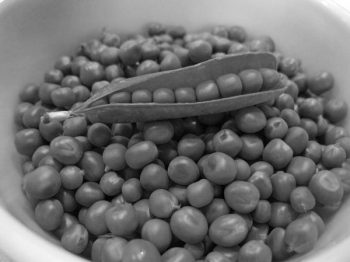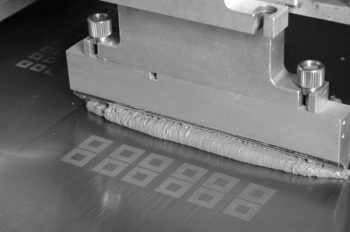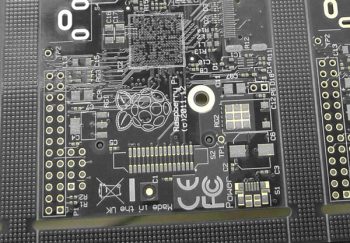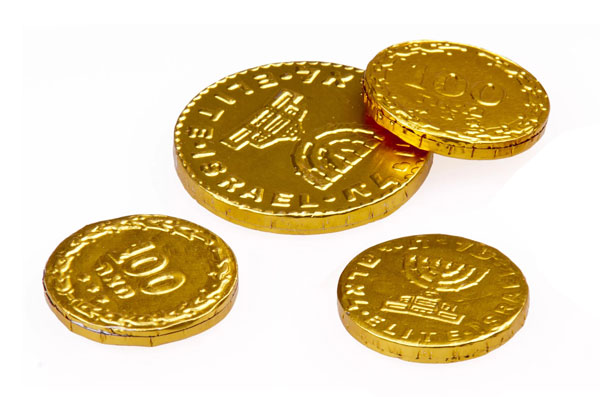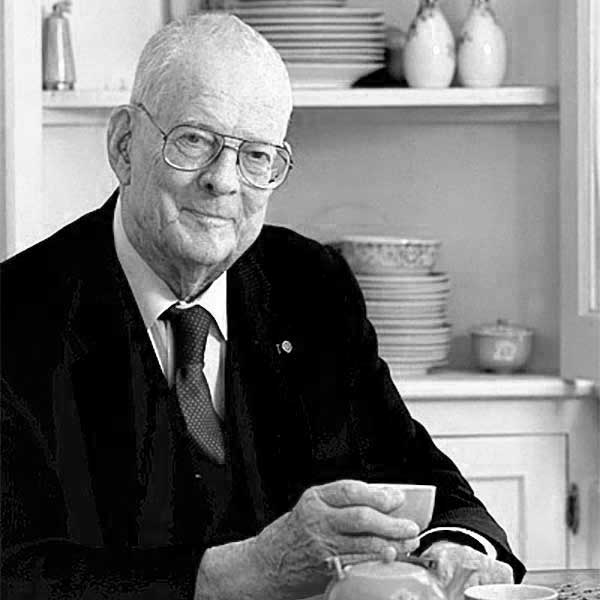Uncertainty - how much exactly?
Most of us dislike uncertainty, by our very nature. It evokes fear of what the future holds, of losing control, of helplessness. We like being in control, knowing what to expect.
Since we developed our scientific and logical thought, we rely on our logic. And what is logic? A deduction based on our experience: “if A then B”.
I this Age of Information, in this Age of Control Freaks, most of us hates not knowing. We create a script, based in our life experience, which defines exactly how and when things should play out, and we judge our “reality” by the results: all is well – or not.
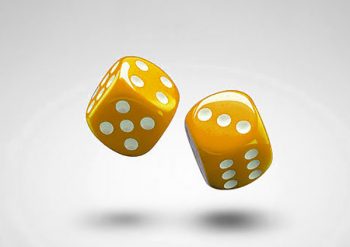
First, let's define uncertainty
Uncertainty brings a feeling of disorientation. “If A is B” no longer works. The significance of uncertainty is precisely that we are no longer certain that when if A occurs, B shall follow. And if we are not confident in the result – how would we protect ourselves? What about the risk? What if we cannot successfully withstand it? What if the loss is great?
I believe that understanding the true meaning of uncertainty is critical for all who chose Quality Assurance as a profession, at the very least. Without doubt it’s of utmost importance to all who works in organizations, managers, operations people… I would say – everyone, but this is a subject for another, wider discussion. And today I would like to focus on uncertainty in processes.
I shall bring below a detailed example from the electronics manufacturing industry, just to illustrate my meaning, and you can make the transition to your own processes from that quite easily. There are a number of pictures to better demonstrate the process for those who are not familiar with it, I have placed them all along the article. Click them to enlarge and color.
Well, allow me to begin by introducing to you a law of nature I consider to be a sort of axiom (an obvious assumption, requiring no proof):
Nature does not tolerate perfection
What does perfection mean in our context? It would be the precise, faultless, reproduction of something with no variation whatsoever. To put it another way – no two things in nature are identical!
No matter how long it is you believe Mankind exists on this Earth, think on it: there has never been, nor will there ever be another person completely identical to yourself! Is that not an awe-inspiring thought? Naturally, everyone who has thought about it before knows it for a fact: after all, we have organs and parts of organs which are unique, such as fingerprints, eye retinas etc. We even know how to uniquely identify a person by their gene stamp, their DNA. Well, if each person’s DNA is unique – then each person is unique, as a whole.
When we say “as similar as two peas in a pod”, we don’t usually take into account that two peas in a pod are not similar at all. That is, they appear similar on a macro level, if we look at them with the naked eye from the vantage point of our size. Then, well, it would seem that they are the same… but if we examine the peas, we can see difference at once…
No two snowflakes are the same… (in fact, lately science seems to support the validity of this claim).
Even the closest thing to being identical in nature: identical twins – is not identical. Even they are somewhat different. Which really is amazing: after all, they have begun as a single cell! However, once that cell has separated into two independent entities – the difference has started: each consequent division was no longer absolutely identical, as the cells divided separately, independently. Differences have been introduced on the micro level.
And as we are a part of nature, therefore we, and everything we produce, are subject to the laws of nature. Thus, everything we have ever made or will ever make in future, by the same definition, differs one from another.
No two products are identical
- There is no such thing as two identical machines, even if they are of the same make and model and even come from the same batch;
- There is no such thing as identical components;
- There is no such thing as identical raw material;
- There is no such thing as identical operations performed by an operator;
True, the differences may be, in mathematical terms – infinitesimal, in engineering terms – negligible. But this is precisely the problem: mathematics and engineering deal with models, and in models one may neglect or ignore effects which are small enough. But models are only good enough for the classroom. They do not work this way in life, where one better not neglect.
In life there is an accumulative effect. A lot of infinitesimal differences may eventually bring a difference big enough to make it impossible to neglect or ignore. Continue ignoring it – and you get non-conformance!
What I have just described is nature’s uncertainty. It turns out that nature is not certain, in other words, the very law that nature does not tolerate perfection yields the one and only direct conclusion: there is no certainty about the way the next one will be, or just how different it will be from the others.
Variance and tolerance
We are constantly dealing with the variance of manufacturing processes. But what exactly is variance? Well, variance is the degree of difference between the results of what the process produces. That is, how different are they from one another. A direct manifestation of this law of nature.
Out of this understanding the concept of tolerance was born: because all the items will, without doubt, be different, we allow items to be similar enough within a given window of acceptable differences. Namely, we limit uncertainty to an allowed level.
Therefore, each product differs from the rest within an allowed tolerance window. In other words, they are similar enough inside the set uncertainty limit.
Let me take that understanding one more step further.
Increasing variance
Every operation, every touch, every handling or interference with the process at any stage adds uncertainty to the process. And, according to what was just said, this simply means increasing the variance.
Sometimes, this uncertainty is hidden and requires deeper focused consideration. For example, in the electronics manufacturing industry, let’s take the SMT machine, which is a machine for mounting components on the surface of the printed circuits, and examine only the first stage of this process: the applying soldering paste onto the printed circuit board (called printing). For those of you who are not familiar with electronics manufacturing industry, allow me to describe an example of printing process.
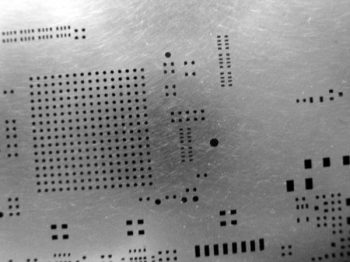
Uncertainty factors in the example
Even here, in one single machine, no small number of uncertainty factors exist, adding themselves into the process:
- the PCBs fed into the printing unit differ from each other:
- in dimensions (width, length, thickness) – affects the location of the PCB on the conveyor with respect to the stencil;
- in location and size of the plated pads – affects printing precision of paste upon pads;
- in the constitution and quality of plating on the pads – affects soldering;
- the PCB loaders differ from each other (in dimensions, in fit to the feeding mechanism) – affects the feeding of PCBs onto conveyor;
- the PCB feeding mechanism into printing unit performs feeding differently each time – affects the height, location and angle of the board on the conveyor;
- the amount of paste changes from printing to printing, because some remains in the stencil holes, or due to exposure to air – affects printing precision and quality in the holes;
- paste makeup and quality changes from tube to tube – affects printing precision and quality in the holes;
- the squeegees sit differently from one assembly to the next – affects the squeegee pressure, and thus printing precision and quality;
- if there is more than one set of squeegees – there are differences between the sets (in dimensions, in assembly) – affects printing precision and quality;
- each raising and separation of the stencil from the paste on the board is performed differently – affects soldering precision and quality;
- the level of cleanliness of the stencil changes from printing to printing, from board to board – affects printing precision and quality…
These factors, at least, and more may be identified, affect the outcome and induce uncertainty into the printing paste stage of the SMT process, which is but the first phase of the board assembly. And what we have seen is only the uncertainty from a single machine; if we manufacture the same board at several lines at once – the uncertainty level would rise more and more…
And we have established already that the uncertainly level is the process variance.
We may, therefore, say that the part of Quality Assurance which is about processes deals exclusively in the study of uncertainty. We must identify the sources of uncertainty and then find a way to reduce it.
How can we reduce variance?
By reducing uncertainty. If earlier I have stated that each touch, each operation, each interference in a process raises uncertainty, then it follows that to reduce it we must eliminate all unnecessary operations and interference in the process. In the 6 sigma methodology we call it eliminating non value-added elements of a process, and the reason that this is a part of the 6 sigma methodology is precisely because of its aim – reducing variance!
Our top objective, therefore, when working with processes, is reducing their variance by means of lowering the uncertainty factors.
And to do that we must spread our process wide, down to micro resolution of single operations, until we can split them no more; examine every operation in minute detail for its necessity; eliminate every unnecessary action; and fine-tune the necessary ones as much as we possibly can. We may need to come up with a different way to perform necessary actions, in order to reduce the uncertainty they introduce into the process.
Grasping the essence
Such a deep understanding of the essence of processes is essential in order to enable improvements, even when they do not seem at first possible. It is essential for comprehension that there would always be points in a process where variance seeps in. The very reason for the existence of variance at all is based in this law that nature does not tolerate perfection, in the accumulation of tiny negligible differences, which at some point result in accumulative effect, “suddenly” creating a significant one.
This understanding is essential so we do not find ourselves standing surprised in front of a non-conformance and asking the eternal question, which management members (who usually do not understand all the above) keep asking: “But what has suddenly changed?”
My answer is: “What hasn’t?” Everything changes, from one moment to the next, all the time. Only usually the changes are small enough to miss, or their influences eliminate one another. And now – we’ve got an accumulative effect, which we can no longer overlook.
In the past we spoke of noise, isn't it the same thing?
Mind you, I am not talking about “random variance” here, which is connected to noise, like in the article “Noise proof“. This has nothing to do with external noises, but internal ones, built into the process. It is a totally different, much deeper level of understanding, way before noises come into the picture. Naturally, noises do add their own weight in the general show.
This is why root cause analysis is so important. If we get down to a fine enough resolution, we may identify these uncertainty factors and neutralize, or at least – reduce them.

Can we prevent uncertainty?
No, we can never prevent uncertainty. Why? Because that would defy the laws of nature, and we cannot help but be governed by laws of nature. We may want to defy them, but we cannot. Everything in this world is subject to those same laws, just as everything is subject to the law to gravity, and other laws. Whether we want to or not. Whether we believe they exist or not. Whether we are aware of them or not.
The only difference is what we can do with our processes. How we can improve them, by minimizing uncertainty factors. Systematically, methodically and constantly reducing them, as long as we are using the same process.
I choose to acknowledge the laws of nature, to accept them with love and look for ways to work with them, instead of against them. I choose to study the uncertainty and look for a way to reduce it, to lower variance.
How about you?
Pictures, top to bottom:
Peas in a pod. Picture from Thoughts from Taylorsoutback website.
Beautiful and real snowflakes on a car. Picture by: Maris. Unfortunately, the website where the photograph was taken was taken down. If anyone knows the photographer or a website for his photos – please tell me and I shall place a link. Click on the picture to enlarge.
An SMT line. The front machine (white dome) is the one used to print the solder paste. On the very front of it is a loader filled with PCBs, fed to the line automatically. Picture from Raspberry PI blog, page Sony, The PI Makers.
A typical solder paste stencil. These are made of stainless steel and are just 0.004″ thick. Picture from Raspberry PI blog, page Sony, The PI Makers.
The squeegee pushes the paste over the stencil. Picture from the Indium Corporation website.
Here we can clearly see the separation of stencil from printed PCB in a manual printing machine. Picture from SMT.net website.
The solder paste can be seen on top of the gold pads on the PCB. Picture from Raspberry PI blog, page Sony, The PI Makers. Click on picture to enlarge.
This post is available also in:
 עברית
עברית
You may also find interesting:
Powered by Contextual Related Posts








